The Three Summits Ping Attended in Saudi Arabia: A Strategic Shift or a Geopolitical Maneuver?
Policy Analysis | This analysis examines Chinese President Xi Jinping’s three summits he attended in Riyadh, bilaterally at the levels of Saudi Arabia, the Gulf states, and then Arab countries. The analysis highlights the most prominent features of Saudi-Sino relations, in light of considering such relations a strategic shift in the two countries’ foreign policy on a hand, or as a geopolitical maneuver in the face of U.S. regional and international policies on the other.
by STRATEGIECS Team
- Release Date – Dec 28, 2022
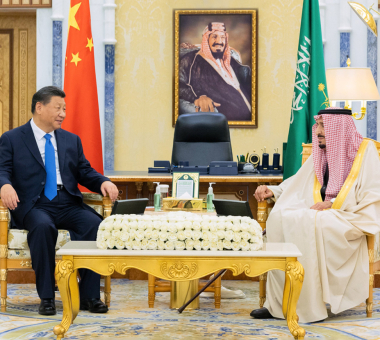
Chinese President Xi Jinping arrived in the Saudi capital of Riyadh on December 7, 2022, to participate in three Saudi, Gulf, and Arab summits that, collectively, the Chinese Foreign Ministry described as “the largest and highest-level diplomatic event between China and the Arab world since the founding of the People’s Republic of China.”
Due to the tense circumstances that the international system is going through, this Chinese diplomatic initiative cannot be separated from the ongoing debate on more than one level, be it Sino-American, Saudi-America, or even at the regional level. It also cannot be separated from the race between the region’s countries to deepen its position among major countries.
Since the visit was officially announced at the height of U.S. discontent with OPEC Plus’ decision to cut oil production, all the visit’s details and motivations have been closely monitored and analyzed. Even the reception ceremony garnered attention in comparisons to previous ceremonies to receive American presidents.
First, the protocol, which stipulates that the emir of the region receives the guest president, was applied, in contrast to the reception ceremony of U.S. President Donald Trump, who was received by Saudi King Salman bin Abdulaziz at the airport.
Second, the Saudi media coverage of the visit was not at a level similar to Trump’s visit. The day after XI’s arrival, the regional media were busy covering Saudi Arabia’s announcement of its 2023 budget. Indeed, King Salman and his crown prince chaired a ministerial meeting to sign the budget on the second day of the visit.
Third, the reception demonstrated the depth of the relationship between Xi and Saudi Crown Prince Mohammed bin Salman when the two leaders warmly shook hands in stark contrast to the fist bumps used in the greeting between Biden and the Saudi crown prince in July. (China still imposes strict restrictions on physical contact, unlike the United States, which had lifted almost all preventive restrictions.)
From Jeddah, which hosted the three Biden summits, to Riyadh, which hosted Xi’s summits, Saudi Arabia is building an integrated axis that integrates politics, security, economics, and shared values to strengthen its regional and international position, and to use that momentum to restore interest in traditional energy sources, as well as the need to respect the sovereignty of countries and not interfere in their affairs.
It is this momentum that international relations theorists almost unanimously agree made this visit a milestone in the course of the international system. It is either that the relative dominance of the international system led by the United States would continue or that China was successful in making a breakthrough towards sharing, or even occupying, the top position of leadership in its geostrategic rivalry with Washington.
The concept of international leadership has undergone changes from what prevailed during the cold war. These changes are driven by the increasing cost of leadership and the difficulty of supervising the implementation of leadership tasks due to the complexity and multiplicity of crises and conflicts at the local, regional, and international levels. Major powers are also facing chronic domestic challenges, some related to economic living conditions, while others are deeper and related to societal homogeneity and political stability.
For this reasons, as well as others, there has been a push towards rethinking the concept and logic of globalization and international leadership, especially since countries qualified to lead are no longer able or perhaps willing to deplete their capabilities without a strategic return. This has heightened the role of regionalism in interpreting international relations in the twenty-first century, with regional powers assuming a stronger leadership in specific geographical domains. These domains are self-sufficient, they possess elements of independence and are not subject to an external force that determines the course of events within such domains.
The Saudi activity in the international theater might be related to establishing the regional leadership position that balances Washington and Beijing considerations regarding the region traditionally deemed a U.S. area of influence. During his visit to Jeddah last summer, Biden did not hide the competitive nature of U.S. relations with China when he responded to speculation and doubts by denying the U.S. withdrawal from the Middle East and leaving a vacuum to be exploited by China, Russia, or Iran.
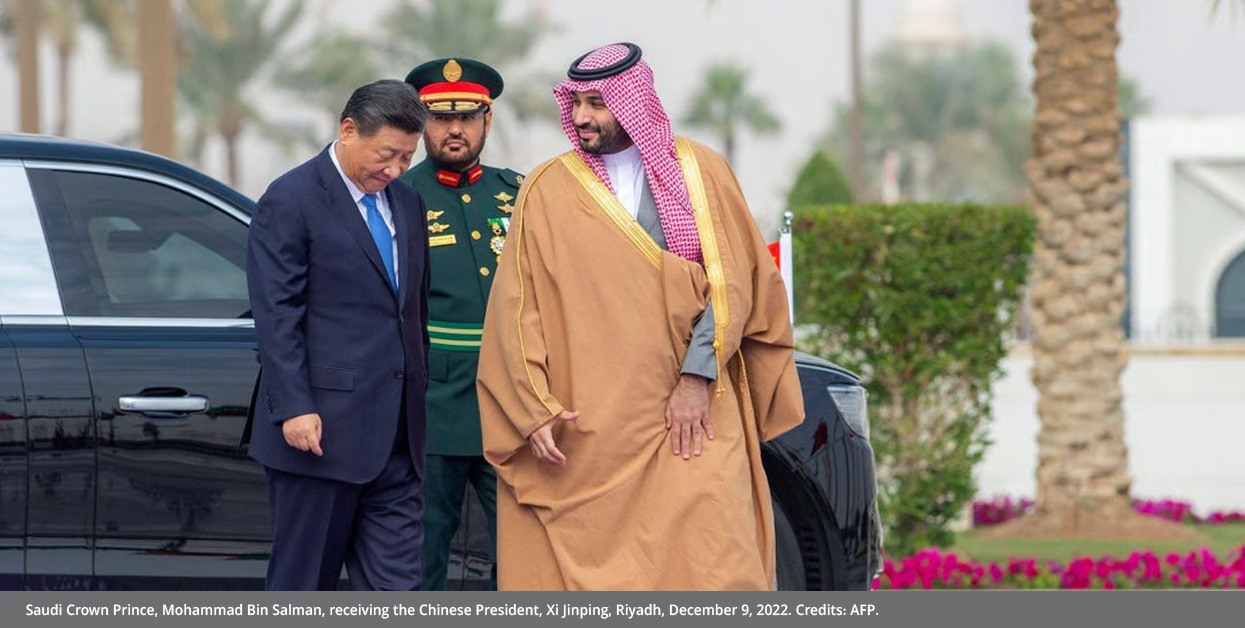
The contents of these three summits were deeper than the Gulf and Arab summits. These contents can be inferred from the official statements issued, and what was stated in the Saudi-Sino joint statement, as well as the political indications that did not receive media attention. The most prominent of these contents are:
First, signing a comprehensive strategic partnership, aimed at raising the level of mutual trust. Signing agreements and projects worth nearly $30 billion, some of them are in security-sensitive areas, such as desalination of vital water to serve the population, communications, and cloud services with Huawei, which is under U.S. sanctions against the background of allegations that the company harnessed data stored at the disposal of Chinese government devices.
Second, giving impetus to two development visions both countries have, namely: China’s Belt and Road Initiative and the regional Saudi Vision 2030. Agreeing to harmonize the two visions may mean affecting the weight of some countries and ports in the region and neglecting U.S. warnings that cooperation in the Belt and Road Initiative should not be deepened.
Third:, it can be noted that the two countries aspire to that deepening cooperation between them will lead to overcoming the challenges facing their economies. China, for instance, is facing a sharp slowdown in economic growth this year in terms of GDP, estimated to be under 6% compared to its 8.1% growth in 2022. These crises are not only related to China’s zero-Covid policy and lockdowns .Some of the country’s crises are structural, such as its real estate crisis, while others are political, such as the financial auditing technology companies that the government does not have a share therein.
As for Riyadh, it is looking for sources that provide high-tech services for its projects and plans free from political constraints. China may make a political concession by overlooking the restrictions on exporting high-tech abroad as a kind of gratitude to Saudi Arabia, and may provide an attractive element to it away from the West, which restricts high-tech exports in some cases and fields.
Fourth, the final statement of the bilateral summit stressed the importance of continuing to “prioritize” bilateral interactions between the two countries and “setting a model” for developing countries based on mutual benefit and win-win relationships. This means that there is a political will to establish a model that serves as an example to be followed in international relations. This proposal is directed at developing countries that want to get out of the U.S. monopoly on international relations.
Fifth, the announcement that some Chinese companies obtained licenses to establish regional headquarters in Saudi Arabia indicates that Riyadh succeeded in attracting strategic Chinese investments.
In February 2021, a Saudi decision was issued to limit government transactions with international companies that have regional principal offices only in Saudi Arabia, with the aim of attracting capital and increasing the size of the non-oil economy. Until October 2021, licenses were granted to 44 foreign companies to establish principal offices in the Kingdom.
The decision includes serious privileges related to tax exemptions, Saudization, and giving the priority in government tenders, which increases Saudi Arabia’s competitiveness in attracting businesses in the region, including China.
Sixth, despite the agreement to align the Belt and Road with Vision 2030, no final agreements were announced regarding supply chain facilities, such as ports, railways, and transnational highways. However, the final statement did include a joint emphasis on the importance of this field as well as the transport and railway sectors.
It is worth noting that there are several plans and projects for regional connectivity, some of which are integrated while some compete. Saudi Arabia is supposed to partially finance a railway project in Jordan that integrates with neighboring countries. A research paper published by STRATEGIECS Think Tank in September 2021 entitled “Rail Interconnection Strategy: Jordanian Hopes and the Search for Regional Integration” examined the regional and international dimension of transport, the logistics projects in the region, and the American desire to crowd out and obstruct the Belt and Road Initiative in its vital joints, including the Middle Eastern vital joints, which carries from East Asia to Europe and Africa.
Seventh, the security dimension was not absent from the Saudi-Sino summit or the following two summits, where the need to combat terrorism and extremism was stressed, rejecting the stereotyping of terrorism to any ethnicity and not practicing double standards in combating it. This was a veiled critique of the Western narrative on terrorism.
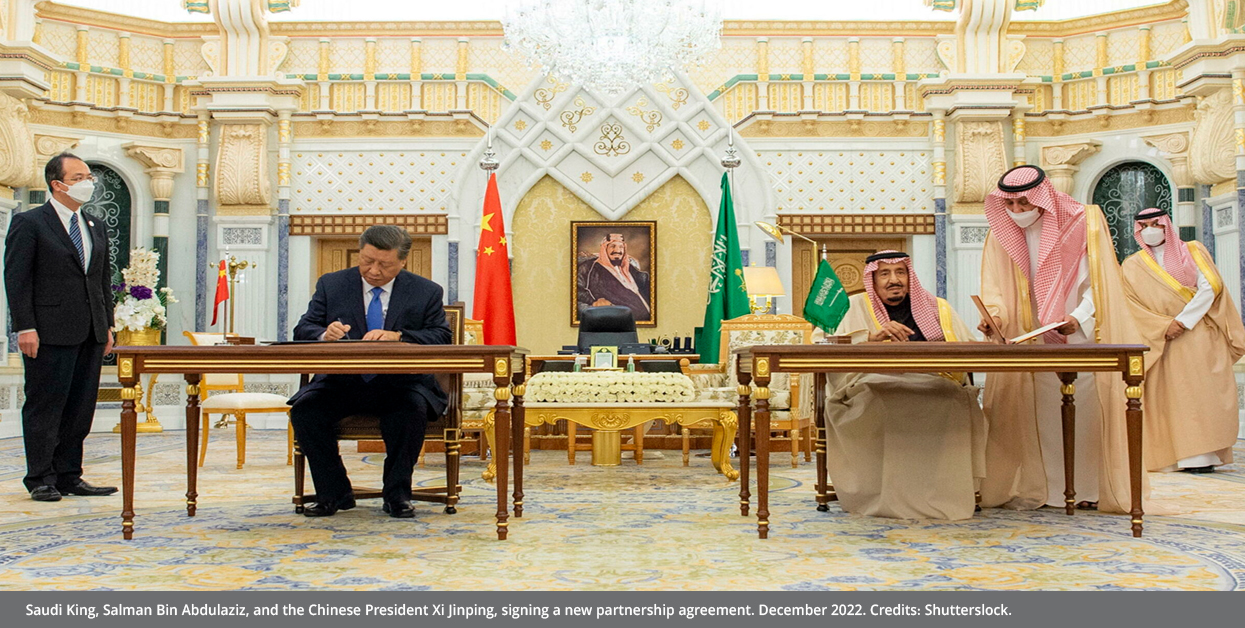
Eighth, the most important matter, a call for monitoring in the bilateral statement, is a clear reference to Africa in two aspects. The first is China’s invitation to Saudi Arabia to discuss avenues of joint economic and trade cooperation with African countries. The second is the agreement to strengthen the bilateral partnership in a way that contributes to supporting stability and development in Africa.
This reference to the continent rich in raw materials has not received significant attention. Also, the mechanisms of cooperation and whether there are joint projects to increase the effective presence in Africa—specifically in the Horn of Africa’s fertile soil located at the entrance to the Bab al-Mandab Strait, which is of great geopolitical importance in international trade—have not been clarified.
As an expression of this importance, Djibouti hosts the only declared Chinese military base outside its territory. China seeks to build a permanent military base on the Atlantic coast of Africa in Guinea. China and Russia are already engaged in activity to establish an integrated strategic presence in the African continent, which Washington is trying to prevent by giving importance to Africa’s crises in the American calculations and attempting to support Africa’s development and stability.
To this end, the U.S.-Africa Summit was held in Washington in December 2022 with the aim of establishing a trade-based partnership, supporting African economies, and promoting good governance. Washington announced it will allocate $55 billion over the next three years for economic, health, security, and environmental support in the continent.
In his speech at the summit, Biden did not explicitly address the U.S. rivalry with China, yet his Secretary of Defense stated on the opening day of the summit that China’s expanding economic footprint in Africa would “destabilize” the continent. Defense Secretary Lloyd Austin also indirectly addressed the growing influence of the Wagner Group, a Russian private security firm, in some African countries.
Accurate Evaluation of the Visit
The timing of the Chinese president’s Middle East visit added extreme sensitivity to its indications, amid exaggerations in interpreting what the visit represented in the incoming and outgoing international reactions towards the Middle East. The three summits, which were attended by about 30 leaders of state and international organizations, came as a referendum to accept China in the region. Some Western reports and studies considered the visit to be a new milestone and a possible change in the international system.
This “exaggeration” in evaluating the visit, the agreements that accompanied the it, and the statements issued during it was not born at the moment. Rather, these exaggerations are an extension of an objective geopolitical fact represented by the decline in the weight of the Middle East in the American calculations on the basis of the emergence of new determinants of American foreign policy represented by managing the competition of great powers in the Far East and Eurasia and facing emerging security risks. The Middle East no longer enjoys American focus after the boom in American oil production and the receding risks of terrorism from the region.
As for the Gulf states, they have deep doubts about the reliability of the United States, as well as the ability to predict the U.S positions on emerging threats to the security of the Gulf and the Middle East, not to mention that the Gulf environment is still under the influence of the “bad” nuclear agreement Obama’s administration concluded with Iran in 2015, in addition to the burden of American requirements that are not always commensurate with its partners, even European ones.
Amid these shifts in the American and Gulf perspective, China presents its development model, which is based on supporting mega projects for the benefit of society, and contributes to achieving stability without interference in local societal or political affairs.
The tripartite summits included agreements in critical areas in twenty-first century international relations, such as artificial intelligence, communications, and dual-use civil-military infrastructure such as transport, energy, and water. This potential relative integration between Gulf energy and Chinese technology enhances the weight of the three XI summits.
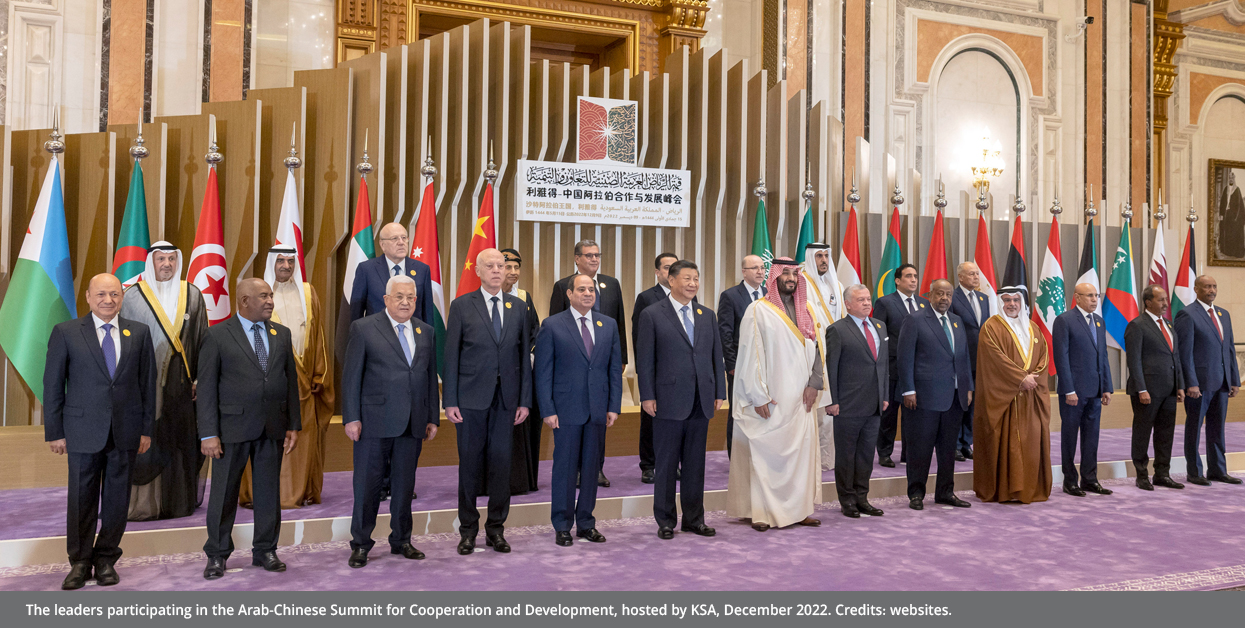
The summits were not limited to material and political aspects. They tried to frame cultural and civilized relations established in agreements, memoranda of understanding, and initiatives. This means that China is seeking to build soft power in the Arab region, and this can be inferred through an article signed by Xi that was published in the Saudi newspaper Al Riyadh during his visit as well comments he made during the summit.
Some agreements and memoranda also focused on the cultural aspect, such as the Sino-Saudi Digital Cultural Year, the Prince Mohammed bin Salman Award for Cultural Cooperation between the Kingdom of Saudi Arabia and the People’s Republic of China, the teaching of the Chinese language in Saudi centers, and the cooperation between Chinese and Saudi academic and research institutions.
Geopolitical Maneuver
Some analysts describe the three summits as a strategic shift, but on the other hand, there are indicators and signs clearly indicating that it is still early to talk about strategic shifts or Middle Eastern turns that affect the map of regional influence. This prospect is what is adopted by this paper, which argues that the Ping summits are as close as possible to geopolitical maneuvering than a strategic shift, due to the following factors:
First, not everything that has been signed is considered legally binding agreements, and the terms of such agreements are subjected to comprehensive technical feasibility studies, as part of them are memoranda of understanding that carry an exploratory nature for potential opportunities. It may be early to sign memoranda of understanding for projects and initiatives without subjecting them to preliminary technical feasibility studies.
Second, no progress has been announced on the use of the yuan in bilateral transactions, this was only addressed by Xi at the Gulf summit, where he called for cooperation with China on the Shanghai Stock Exchange, created to sell oil and gas in yuan. None of the countries expressed enthusiasm for this proposal, which, if it happened, would signal a "strategic shift" of the Gulf’s orientation towards China, away from Washington, while breaking the petrodollar.
Third, there has been no progress in the Gulf-China free trade negotiations. The statement of the Gulf-China summit only stressed the importance of completing the free trade negotiations as soon as possible, without providing a time frame. This file has been subject to studies and meetings for years. It is unlikely to reach a comprehensive and complete free trade agreement, due to the difference in trade power between the two parties, in addition to the risks of harming the Gulf industry due to the preferences that will be given to Chinese goods, that are already cheap in the free trade agreement.
Fourth, it is true that the comprehensive strategic partnership agreement, between Saudi Arabia and China, demonstrates the depth of bilateral relations, but at the same time, China finds itself forced to balance its relations between two extremes, as it previously concluded a comprehensive partnership agreement with Iran, that includes military and defense dimensions.
While Saudi Arabia-Iran relations are uncertain, Beijing may find itself forced to choose between one of the partners, or it may be forced to undertake political mediation, that brings the positions of the two adversaries closer, in order to ensure that its interests are not affected.
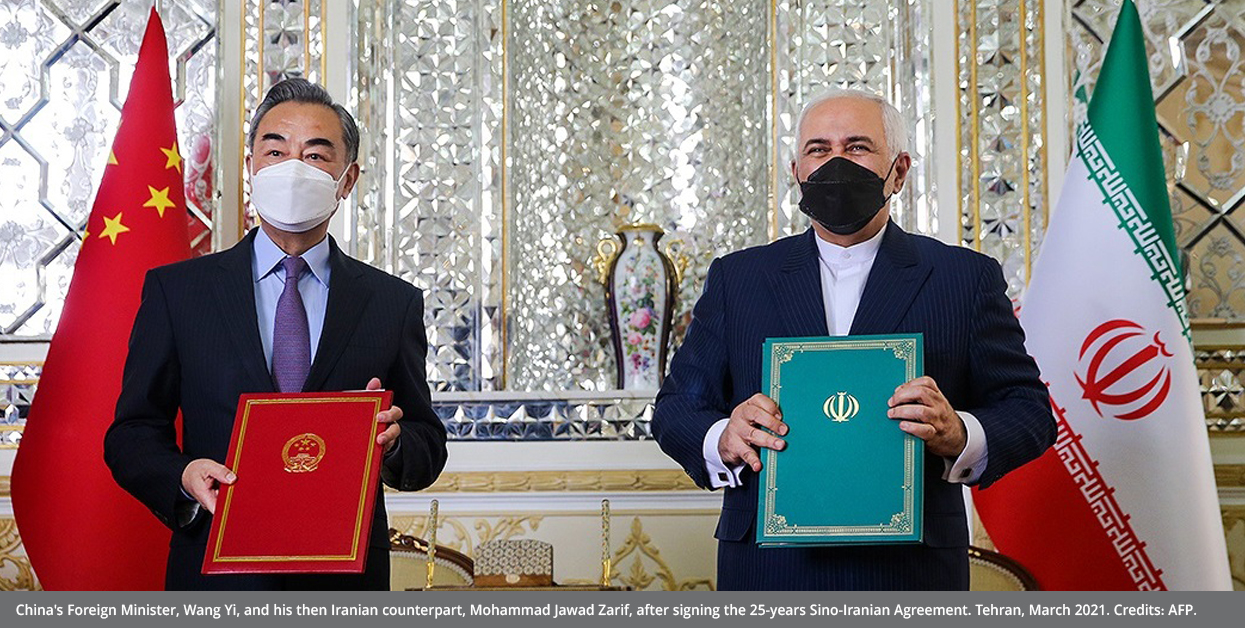
As China’s partnerships extend to rival and competing countries, the Chinese principle promoted in the region as a “friend of all” is confirmed, which will face a difficult test by increasing and deepening Chinese partnerships, given the state of polarization and the fragility of security stability.
China tackled the first incident of its partnership with two adversaries, this is when the Iranian Foreign Ministry summoned the Chinese ambassador to express strong dissatisfaction with some of what was contained in the statement of the Gulf-China summit, specifically the reference to the three islands that the UAE claims sovereignty over, guarantees of the peaceful nuclear program, and respect for the principle of good neighborliness and non-interference.
In this regard, it should be questioned whether Beijing has made up its decision and chosen to favor Riyadh at the expense of Tehran, especially since the Iran-China Comprehensive Cooperation Agreement has not made real progress, due to U.S. sanctions, and due to Beijing’s desire not to clash with Washington in providing support to Iran, that enables it to ease the impact of sanctions and overcome their severe effects on society and stability.
Fifth, China’s economic role in the region, and the density of China’s funding for projects, that may sometimes put it to be a party to crises, such as its partial financing of the Grand Ethiopian Renaissance Dam that threatens Egypt’s water security and, in a broad sense, its national security.
Sixth, Beijing may face difficulty in transforming the positions it expressed during the summits into reality on the ground, as the statements of the leaders included support for views on major crises, such as the establishment of a Palestinian State on the 1967 borders, the one-China principle (Taiwan and Hong Kong), and a political solution to the Yemeni crisis in accordance with the Gulf Cooperation Council Initiative.
More precisely, the positions of support lack the means of actual implementation as no new initiative to resolve any of the region’s crises has been discussed, according to what was officially announced and covered by media reports.
Seventh, even if China wants to form a pressure position, it will take a long time to establish an influential defense dimension in the region. This dimension was absent from the three summits at all levels, such as military industrialization, arms purchase, and security coordination. To be precise: the Saudi-Sino summit may have discussed in some of its non-public meetings defensive aspects, but what is certain is that China’s defensive weight does not qualify it to practice public activities.
A Strategic Competition, not an Exclusionary Competition
There might be some exaggerations regarding the Chinese president’s visit, in terms of its repercussions on the regional and international powers map of distribution. Some articles and reports considered that the features of multipolarity in the region are unfolding, though the concept of polarity is not related to a region, but to the entire international system.
The Eurasian rift between NATO and Russia may have fueled a Cold War mentality among some observers and analysts while interpreting or relating any tour, incident, or agreement to shifts in power.
Certainly, the United States is no longer the unilateral power, that acts as a dominant party to the international system, as it used to be after the collapse of the Soviet Union, but it is misleading to project the exclusionary ideological Cold War conflict on the status quo. Even the leaders of the two countries usually warn against invoking the logic of the Cold War, the latest of these statements came on the sidelines of a meeting between Biden and XI in November 2022 during the G20 summit, where they pledged to “continue to manage the competition.” As Biden stated, “There will not necessarily be a new cold war.” AndXi said, “China has no intention of changing the current international order".
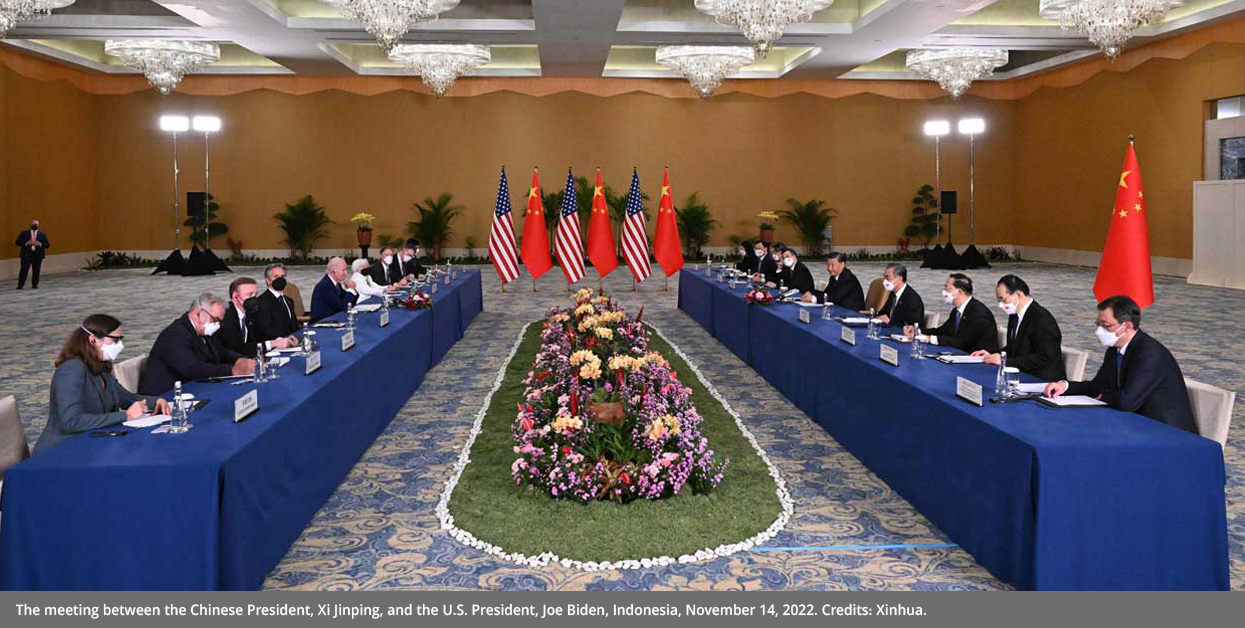
This indicates that U.S.-China relations are competitive rather than conflictive, and are cautious, responsible, and unwilling to revive the polarization of the second half of the twentieth century, which divided the world into two axes never meet.
The Middle East is no exception to being a field of Sino-American competition. All parties want to maneuver and improve the terms of negotiation through moves related to impact and influence. The Arab Gulf states want to be an independent power capable of diversifying options in a way that breaks Washington’s monopoly on influence in the region.
As for switching strategic alliances, this is an unlikely risk that requires replacing the U.S. presence with deepening alliances with China and Russia to rise to defense, security and high-tech levels, economically favoring China in Gulf estimates. It is unlikely that Washington will turn a blind eye to such a “shift,” especially since the Biden administration’s national security strategy announced in October 2022 declared the current decade as decisive for the shape of the international system and the position of the United States, which realizes that the Middle East may be the decisive track for China.
Therefore, it can be said that even if China’s interactions towards the region acquire the elements of continuity and growth, but such interactions are not likely to take place in the short and medium terms, in terms of being an alternative to the U.S. partnership, enhanced by an international military deployment, capable of intervening in crises, unlike China, which adopts a "peaceful rise" in its foreign policy.
Finally, the three summits are important both in terms of the general international scene and areas subject to cooperation. Most likely, with the deepening of economic relations, the political security breakthroughs will occur by necessity. Technology means may access to state data and the orientation of its citizens.
Therefore, in the medium and long terms, the discussion of China’s presence in the region can carry extreme dimensions. But in the current circumstances, all signs indicate that Beijing and the main Arab capitals are not united by a common enemy but common dangers, such as energy security and food security, and that both parties are not united by mutual economic dependence but by close cooperation.
When a change occurs regarding these two data points—common enemy and economic interdependence—we can, only then, talk about a strategic shift in the region and even the international system.

STRATEGIECS Team
Policy Analysis Team
 العربية
العربية